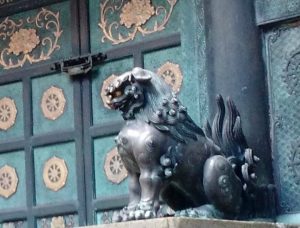In the late 19th century, what started out as a prosperous copper mining business quickly began to cause great harm to the surrounding town of Ashio. Smog from the mines affected the health of the villagers and significantly thinned the surrounding forests. Runoff in the waterways killed off fish, ruined farmland bordering the Tonegawa and Edogawa rivers, the later of which flowed down into Tokyo.
The government decided to avert the mine runoff coming to Tokyo by creating a basin in lowlands bordering the river. The location they chose was a village called Yanaka. In Robert Stolz’s Bad Water, the seizure of the Yanaka villager’s homes and land is detailed in accounts. Some villagers were paid to leave, and others tried valiantly to stay in their ancestral homes only to be forced out by officials. In 1907, the village was flooded despite some remaining villagers still living in the area, and the town was forgotten (Stolz 2014, 94).
Hearing is always different than seeing. When we reached the Watarase Basin and headed to an observation the surrounding land was empty, filled only with tall reeds, man made waterways, and pathways like a park. It didn’t look like anything had ever occupied the land. We walked along the paths to all that was left of the village; high ground that had once been home to a shrine, and a graveyard.
My experience at the Watarase Basin and in the memorial of Yanaka was directly informed and influenced by our Bad Water readings. When I expected to see signs of struggle and heartbreak, there were none. Had I not known about Ashio and Yanaka, I would never have known why there was a little graveyard so close to a reservoir. I heard some classmates say that they had expected more, and I could see why. After reading about all the awful events in Bad Water, and then coming to an area that was only a ghost of its former self was such a shock. When we returned, I tried to find pictures of the village to see what it looked like before, but there was almost nothing to be found. In Stolz’ book, villagers were stopped from taking pictures by the government, so really all that remains of the town is the small area we visited (Stolz 2014, 105).
During our time in Japan, I have never been struck speechless or filled with as much sorrow as when we were in what was once the village of Yanaka.
Sources:
Stolz, Robert. 2014. Bad Water: Nature, Pollution & Politics in Japan, 1870-1950. Duke University Press: Durham & London.




